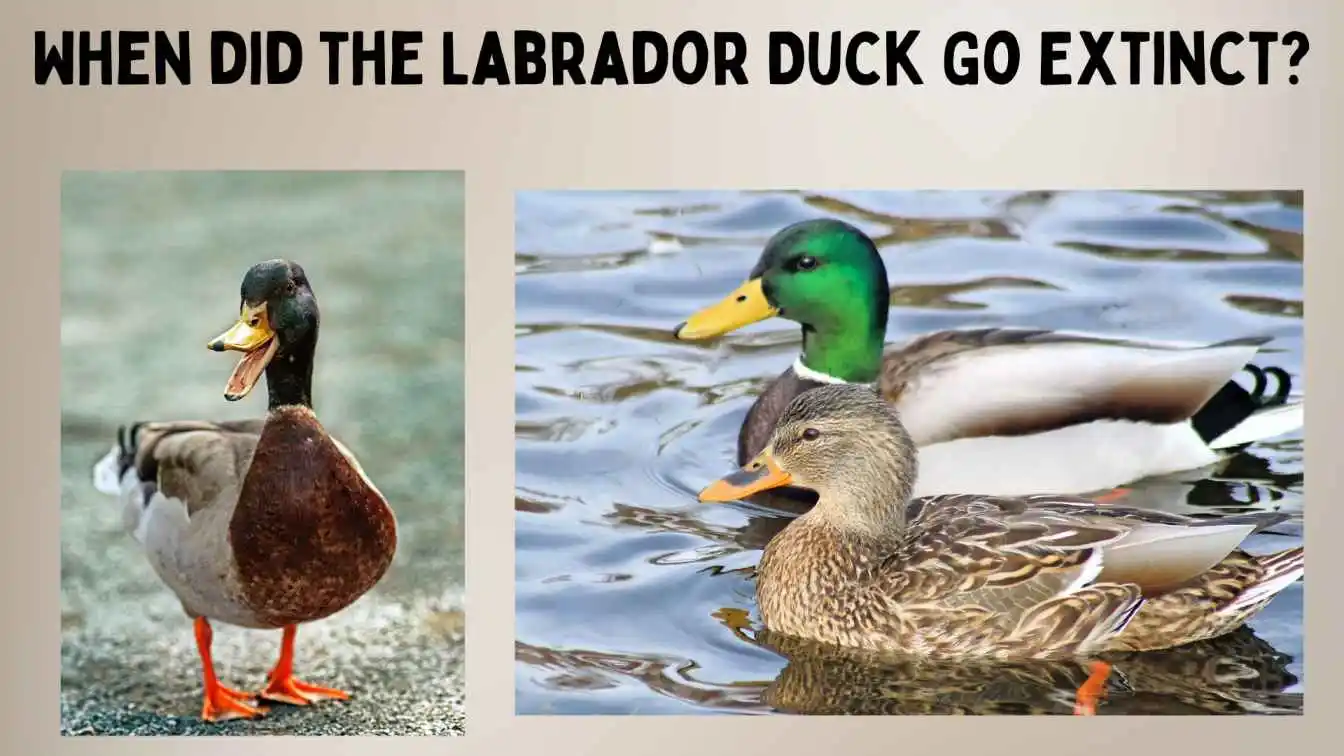A duck that has become one of the most mysterious extinct bird species in North America is the Labrador Duck, scientifically known as Camptorhynchus labradorius. Sparse records and glimpse rare makings the extinction of this duck more or less enigmatic; the event begets more questions than answers in this case. When did the Labrador Duck go extinct, and what led to its disappearance?

A Brief Encounter with History
The Labrador Duck was a striking bird characterized by its unique black and white plumage. It was native to the Atlantic coast of North America, frequenting areas from Nova Scotia to New Jersey. Despite its striking appearance, it remained relatively obscure, with few detailed observations recorded by naturalists.
Extinction: A Slow Fade
The timeline of the Labrador Duck’s extinction is unclear, mainly due to limited records and the secretive nature of the bird. The last time a Labrador Duck was confirmed in history was on Long Island, New York, in December of 1875. This previous sighting leading up to December 1875 is important, as the sightings after that period are sporadic and unconfirmed.
In 1878, another alleged sighting was reported in Elmira, New York, but this cannot be substantiated with conclusive evidence, so 1875 continues to be the date most widely accepted as that of the bird’s extinction. It was only by the end of the 19th century that it was realized among ornithologists and bird lovers that the Labrador Duck had gone into extinction.
Theories and Speculations: When did the Labrador Duck Go Extinct and Why? 2024
Although several theories explain the extinction of the Labrador Duck, none can be proven decisively. Some of the most common theories are as follows:
Habitat Destruction: Human activities may have resulted in alteration or destruction of its coastal habitats, specifically the breeding grounds in northern regions and wintering grounds along the Atlantic coast. The growth of human settlements and industrialization might have caused an interruption in their habitat.
Overhunting: While the Labrador Duck was not explicitly considered a game by hunters, it could fulfill this dream through its meat and feathers. It could have made sure that it began its complete eradication and extinction during the 19th century with an increase in the human population and hunting trends.
Changes in Food Supply: Small mollusks and crustaceans are what people took to be the basis of the Labrador Duck’s specialized diet. Any environmental changes that removed the food resources from the equation for any reason were likely to affect their survival in great numbers.
Reproduction Challenges: There are suggestions that the Labrador Duck yielded low reproductive success, possibly because of possible predation on its eggs and chicks or limited suitable breeding sites.
The Legacy of the Labrador Duck by Steve C. Sandie
The extinction of the Labrador Duck summarizes the fragility of species and the relationship of loss to survival of human interference on niches and biodiversity in general. Unlike other extinct birds, such as the passenger pigeon or the great auk, the story of the Labrador Duck is incredibly low-key due to the lack of stunning population crashes or good record documentation.
Today, the Labrador Duck is remembered by very few preserved specimens in museums, along with the odd mention in historical texts. Its enigmatic demise attests to the value of chronicling and safeguarding efforts concerning the diversity of life forms on our planet.
Final Short
In the grand tapestry of natural history, the extinction of the Labrador Duck is a subtle yet important thread: a reminder of the countless species that have silently slipped away and our ongoing responsibility to safeguard the remaining threads of biodiversity. Understanding the story of the Labrador Duck can help one pay homage to this extinct species and gain an understanding of the vast challenges facing some of the creatures in the world today.
Let it inspire us to behave more responsibly in our quest to protect the natural world for posterity.
FAQs
Why did the Labrador Duck go extinct?
The Labrador Duck went wiped out essentially because of a blend of overhunting and territory obliteration. Moreover, the species’ particular taking care of propensities, which depended on mollusks and other marine spineless creatures, made it defenseless against changes in its current circumstance. Human exercises fundamentally decreased its food sources and settling locales, prompting its possible vanishing in the late nineteenth hundred years.
What is the closest relative to the Labrador Duck?
The Labrador Duck’s closest relative is believed to be the Steller’s Eider, a species within the same tribe (Mergini) of sea ducks. This relationship is based on similarities in morphology and behavior.
How big are Labrador Ducks?
Labrador Ducks were medium-sized ocean ducks, with guys estimating around 20 inches (50 cm) long and gauging around 2 pounds (900 grams). Females were somewhat more modest and lighter.